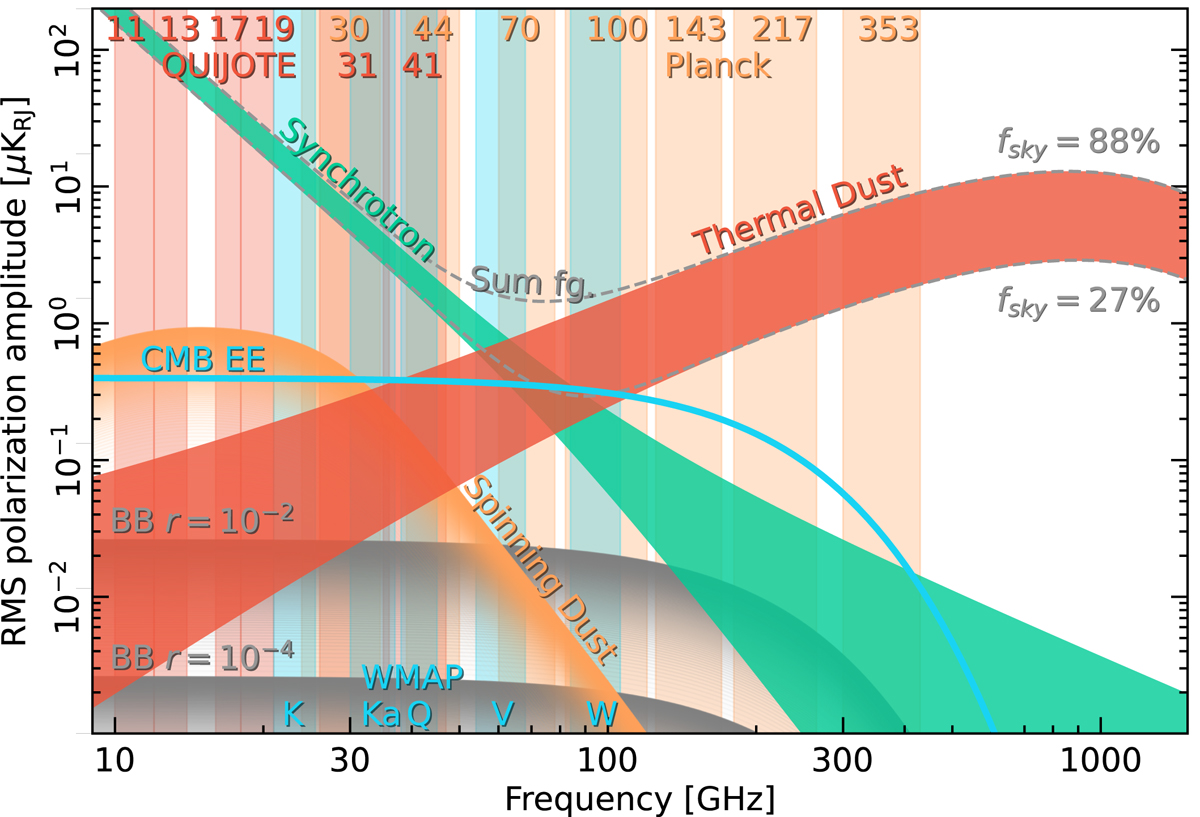Fig. 15.

Download original image
Polarization amplitude root-mean-square (RMS) as a function of frequency and astrophysical component and polarized emission. Each component map is smoothed to a common angular resolution of 1° FWHM, and the lower and upper edges of each band are defined by the RMS outside masks covering 27% and 88% of the sky, respectively. An artificial broadening has been applied to the low-amplitude tails of the foreground spectra to visually indicate uncertainties in regions of low S/N for the relevant components. The EE CMB spectrum is generated from ideal CMB simulations based on the best-fit PlanckΛCDM model, while the BB limits are derived with tensor-to-scalar ratios of r = 10−2 and 10−4, respectively. Additionally, we visualize an upper limit on the polarization fraction of spinning dust of 1% as has been reported in literature (Génova-Santos et al. 2017; Macellari et al. 2011; Herman et al. 2023).
Current usage metrics show cumulative count of Article Views (full-text article views including HTML views, PDF and ePub downloads, according to the available data) and Abstracts Views on Vision4Press platform.
Data correspond to usage on the plateform after 2015. The current usage metrics is available 48-96 hours after online publication and is updated daily on week days.
Initial download of the metrics may take a while.


